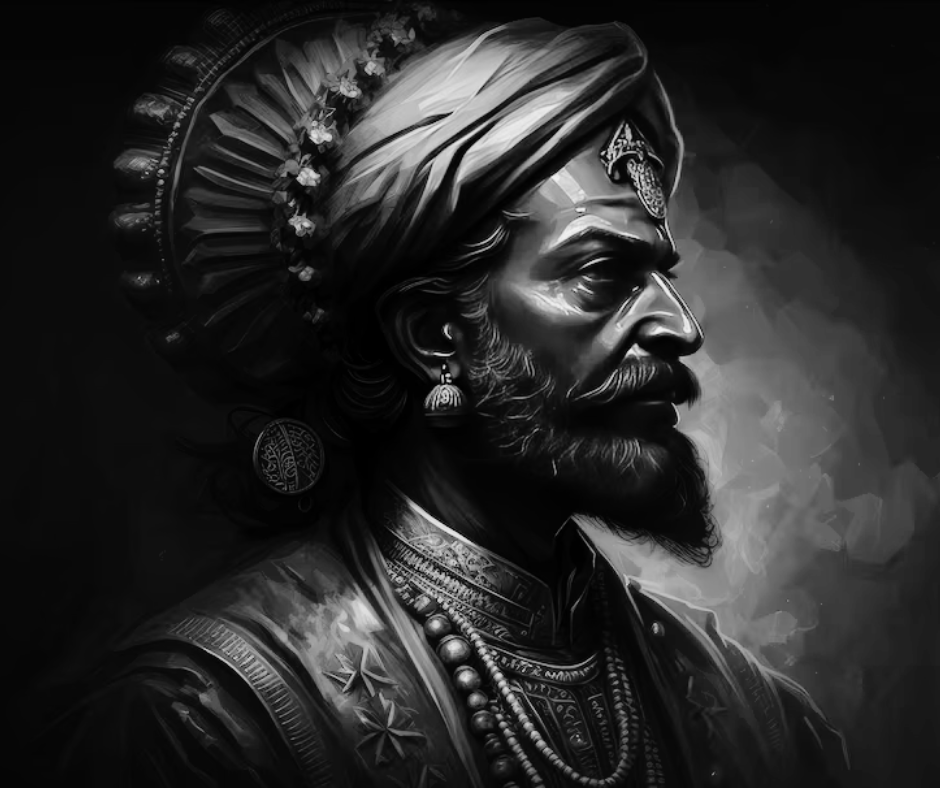Harsh

From the center located in Bihar and Uttar Pradesh, the Guptas ruled North and Western India for about 160 years, i.e. till the middle of the sixth century. After that North India was again divided into many states. The White Huns established their dominance over Kashmir, Punjab and Western India from 500 AD. North and Western India came under the control of about half a dozen feudal lords, who divided the Gupta Empire among themselves. Gradually, a ruler of Thanesar from among the dynasties of Haryana established his power over all the other feudal lords, his name was Harshvardhan (AD 606-47). Excavations at ‘Harsh ke Tila’ at Thanesar have revealed some brick buildings, but they do not appear to be part of a palace.
Harsha made Kannauj his capital and from there he expanded his empire. By the seventh century, when Pataliputra declined, Kannauj was a rising power. How did this happened? Pataliputra’s power and importance lay in trade and commerce. Here toll was collected from the traders coming from the rivers around East, West, North and South, which was their main source of income.
There was a shortage of funds due to the decline in trade, due to which officers and soldiers started getting paid through donations of land instead of salaries. Therefore the importance of the city also decreased. Power shifted to military camps (skandhavaras) and far-flung places of strategic importance. One such area was Kannauj. Hence the political importance of this place, located in the Farrukhabad district of Uttar Pradesh, increased from the second half of the sixth century. Its rise as a center of political power from the reign of Harsha marks the emergence of the feudal period in North India and Pataliputra largely adhered to the pre-feudal system. Fortification of the plains was more difficult, but Kannauj was situated at a high place, which could be easily fortified. Kannauj region situated in the cold center of Doab Systematic fortification was done. Now troops could be sent by both land and water routes to maintain control over the eastern and western parts of the Doab.
The early history of Harsha’s rule can be better understood by studying the works of Banabhatta. Banabhatta was the court poet of Harsha, he wrote a book titled Harshacharita. This is also confirmed by the documents of the Chinese pilgrim Wen Tsang, who came to India in the seventh century and stayed here for about 15 years. different types of inscriptions of joy Also tells about taxes and officials. Harsha is said to be the last great Hindu emperor of India, but he was neither a devout Hindu nor the ruler of the entire country. His authority was limited to North India except Kashmir. Rajasthan, Punjab, Uttar Pradesh, Bihar and Orissa were under his direct control, but his influence extended to much wider areas. It seems that the border states had accepted their sovereignty. In eastern India he faced Shashanka, the Shaivite king of Gauda, who had cut down the Bodhi tree at Bodh Gaya. However, Shashanka’s death in AD 619 put an end to this hostility. Harsha’s victorious campaign on the southern front was stopped at the Narmada River by the Chalukya king, Pulakeshin, ruler of modern Karnataka and Maharashtra. Pulakeshin’s capital was at Badami in modern Bijapur district. Moreover, Harsha did not face any serious opposition. He was successful in creating political unity in a large part of India.
Administration
Harshavardhana’s empire is an example of the ancient and medieval transitional period. Harsha ruled his empire like the Guptas, but in comparison Harsha’s administration was more feudal and decentralized. It is said that Harsha had 1,00,000 horses and 60,000 elephants. This seems surprising, because the Mauryas, who ruled the entire country except the far south, had only 30,000 horsemen and 9000 elephants. However, if Harsha had been in a position to muster the support of all his feudal lords at the time of war, he could have had such a large army. Every feudal lord came with his share of foot soldiers and horses and thus was added to the royal army. The increase in the royal army indicated a large increase in population. Land grants continued to be made to priests for rendering special services to the state. It is noteworthy that the credit for giving land grant to the officials by issuing documents goes to Harsh. In these grants also the same concessions were given as in the earlier grants. The Chinese pilgrim Ven Tsang states that Harsha’s revenue was divided into four parts. In these, the first part is for the king, the second for scholars, the third for officials and government employees and the fourth for religious purposes. The expenditure was earmarked for. He also told that the ministers and officials of the state were rich in land. The practice of donating land and rewarding officials by feudal lords started during the Harsh period itself. That is why coins issued by King Harsha are less available.
In Harsha’s empire, law and order was not good. The king may have provided special care for Whan Tsang’s safety, yet his belongings were looted; Although he says that according to the law here, serious punishments were given for crimes. Robbery was considered a second treason, for which the robber’s right hand was cut off. It seems that under the influence of Buddhism the severity of punishment reduced and criminals started getting life imprisonment.
Buddhism and Nalanda

When Chinese pilgrims were in India, Buddhists were divided into eighteen sects. The old centers of Buddhism were declining. The most famous center was Nalanda, a great Buddhist university for Buddhist monks. It is said that there are about 10,000 Buddhist monk students here.
He was taught Buddhist philosophy of the Mahayana tradition. Although not all the mounds of Nalanda have been excavated, excavations have revealed very impressive complexes. It was conserved and renovated for 700 years from the fifth century onwards. The excavated buildings did not have the capacity to house 10,000 monks. In 670 AD, Another Chinese pilgrim, Itsing visited Nalanda and mentioned only 3000 monks living there. This seems possible. Because even if the remaining mounds are excavated, they will not be able to house 10,000 monks. According to Ven Tsang, Nalanda University was run by the revenue of 100 villages. Itsing puts this number at 200. Thus, during the reign of Harshvardhan, Nalanda was a huge monastery.
Harsha followed a tolerant religious policy. He was a Shaivite in his early years, but gradually he became a great patron of Buddhism. As a devout Buddhist he organized a grand gathering at Kannauj to widely propagate the doctrines of Mahayana. This meeting was attended not only by Ven Tsang and the Kamarupa ruler Bhaskaravarman, but also by the kings of twenty kingdoms and several thousand priests of various sects. Two hut-like halls were built to accommodate a thousand persons. However, the most important construction was a huge tower, in the center of which was a golden statue of Buddha, as tall as the king. Harsha worshiped the idol and hosted a public dinner. Wen Tsang opened the discussion at the meeting by extolling the virtues of Mahayana Buddhism and challenging the audience to refute his arguments. However, no one came forward for five days; Then his religious rivals conspired to assassinate him. As soon as Harsha came to know about this, he warned Wan Tsang that he would be beheaded if he caused even the slightest harm to him. Suddenly the great tower caught fire and an attempt was made to assassinate Harsha. Harsha then arrested 500 Brahmins. He exiled most of them and even sentenced some to death. This shows that Harsha was not as tolerant as has been said about him. After Kannauj, he organized a big gathering at Prayag, in which all the assistant rulers, ministers, nobles etc. were present. On this occasion, the Buddha statue was worshiped and Xuanzang gave lectures. Ultimately, Harsha donated enough and as per a tradition, he gave away everything except his personal clothes. When Tsang praised Harsha very much. The king was kind, courteous and gracious to him, and hence the pilgrim was able to visit different parts of the empire.
In Harshacharita, Banabhatta has presented an exaggerated description of the early years of his patron Harsha in an ornate style, whose style proved to be exemplary for subsequent writers. Harsha was not only responsible for the patronage and education of scholars, but also for the three plays.
He is also remembered for writing: Priyadarshika, Ratnavali and Nagananda. Banabhatta credits his poetic skills to Harsha and some later writers also consider him a literary emperor. However, the authorship of Harsha’s three plays has been doubted by many medieval scholars. It is believed that these three were composed by a person named Dhavak, which were given to Harsh for consideration and possibly Harsh may have written some parts. There is a saying that king writers are only half writers. In both ancient and medieval India, high literary achievements, among other achievements, were often depicted to enhance the image of the king. The practice of praising the patron, started by Harishena during the time of Samudragupta, had become generally and firmly established by the time of Harsha. It is clear that its purpose was not only to win the trust of the king, but also to glorify him in the eyes of his rivals and people.
I hope you liked this blog, please leave me comment.
